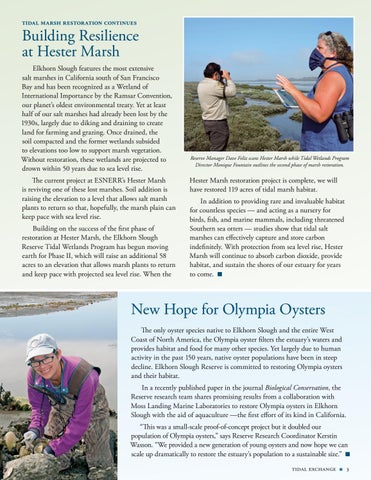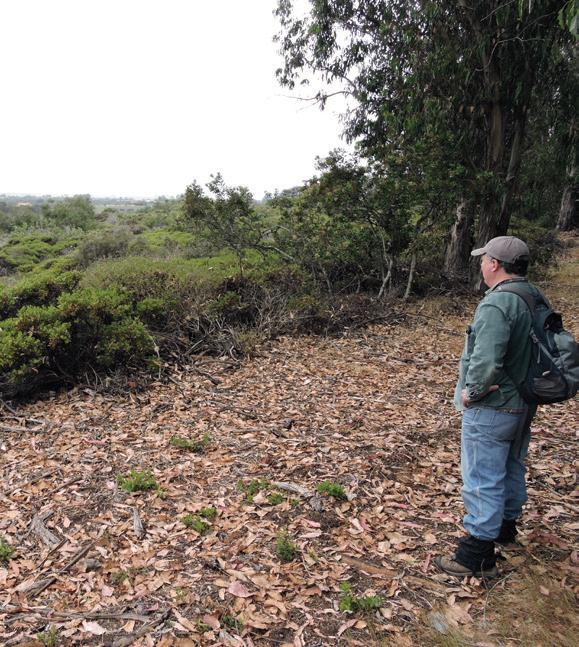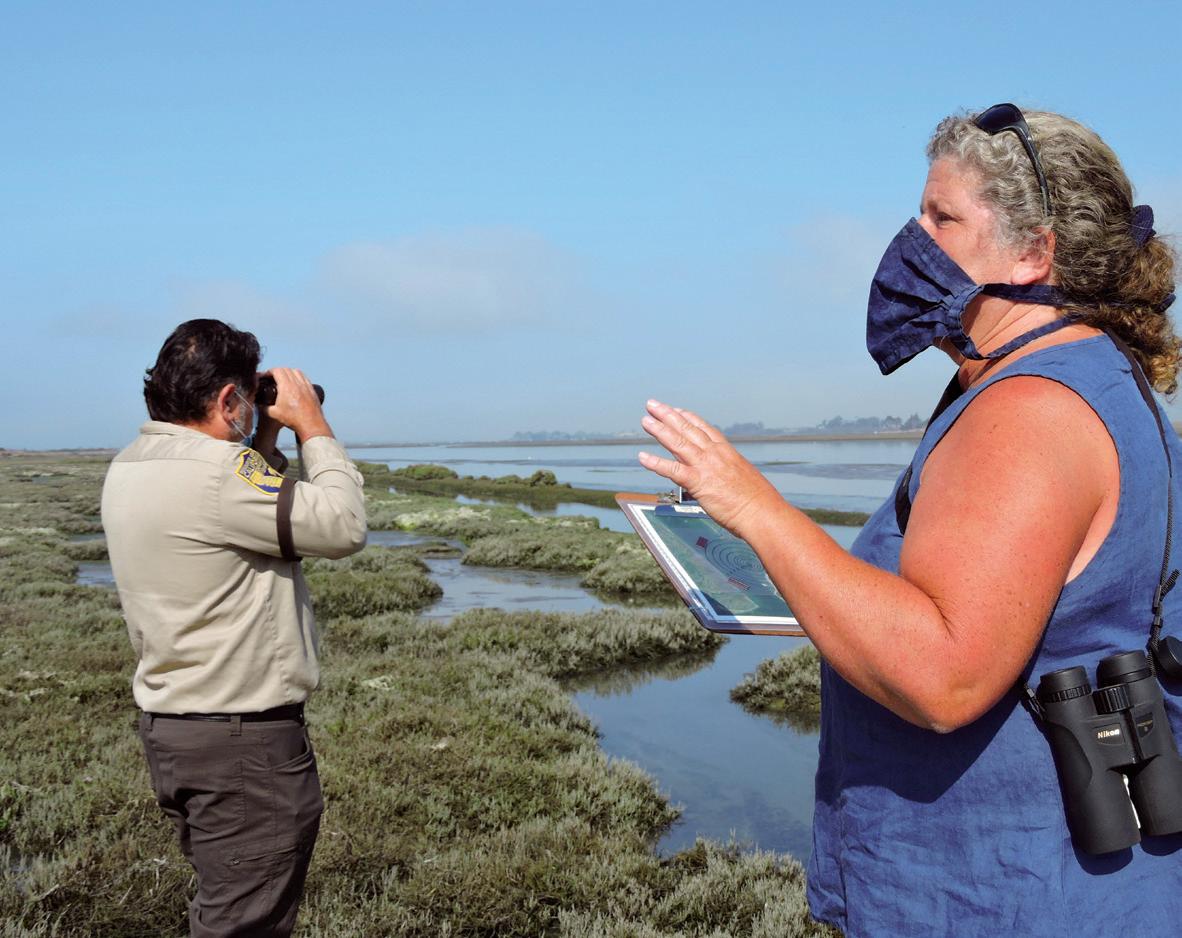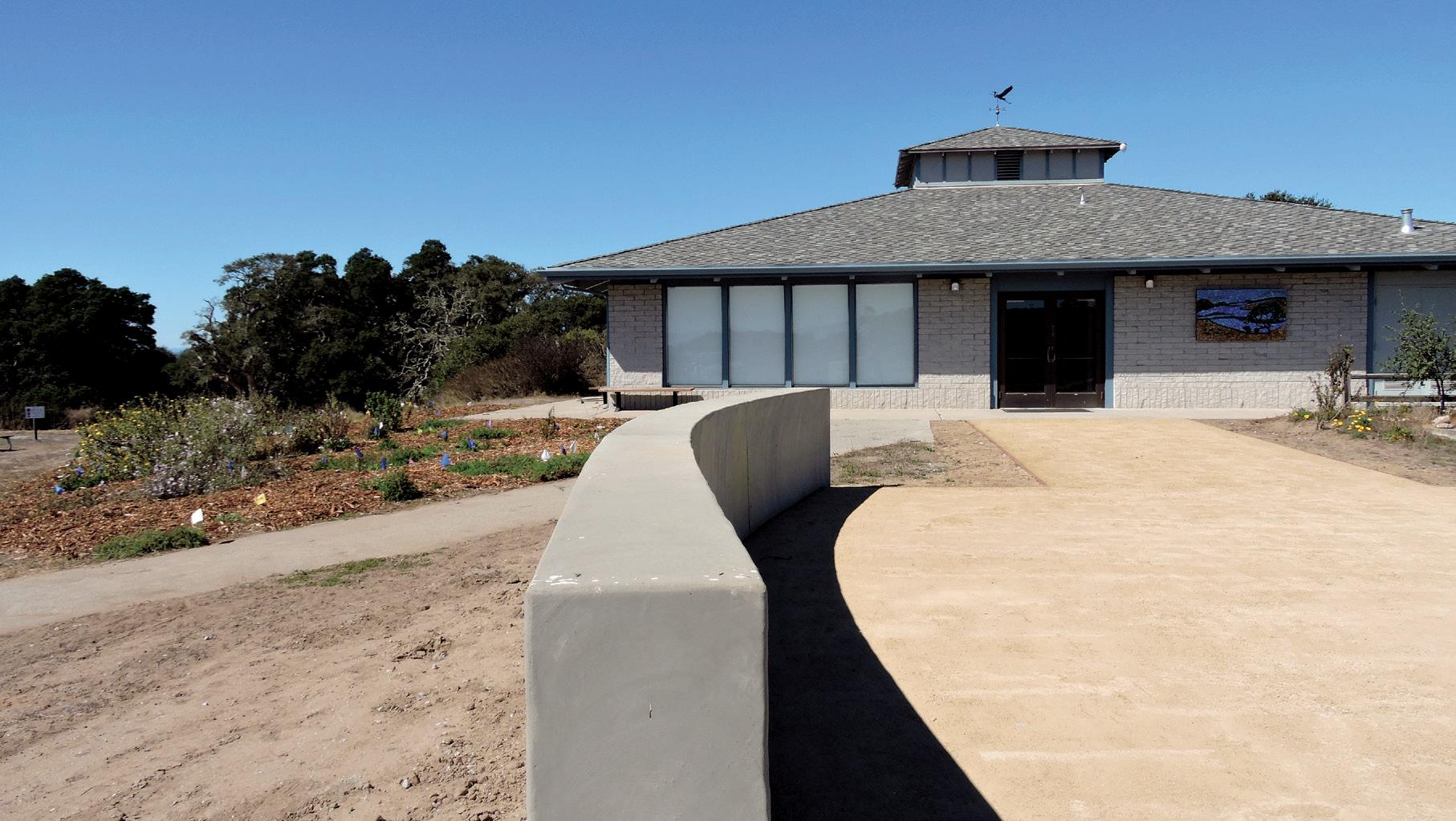tidal marsh restoration continues
Building Resilience at Hester Marsh Elkhorn Slough features the most extensive salt marshes in California south of San Francisco Bay and has been recognized as a Wetland of International Importance by the Ramsar Convention, our planet’s oldest environmental treaty. Yet at least half of our salt marshes had already been lost by the 1930s, largely due to diking and draining to create land for farming and grazing. Once drained, the soil compacted and the former wetlands subsided to elevations too low to support marsh vegetation. Without restoration, these wetlands are projected to drown within 50 years due to sea level rise. The current project at ESNERR’s Hester Marsh is reviving one of these lost marshes. Soil addition is raising the elevation to a level that allows salt marsh plants to return so that, hopefully, the marsh plain can keep pace with sea level rise. Building on the success of the first phase of restoration at Hester Marsh, the Elkhorn Slough Reserve Tidal Wetlands Program has begun moving earth for Phase II, which will raise an additional 58 acres to an elevation that allows marsh plants to return and keep pace with projected sea level rise. When the
Reserve Manager Dave Feliz scans Hester Marsh while Tidal Wetlands Program Director Monique Fountain outlines the second phase of marsh restoration.
Hester Marsh restoration project is complete, we will have restored 119 acres of tidal marsh habitat. In addition to providing rare and invaluable habitat for countless species — and acting as a nursery for birds, fish, and marine mammals, including threatened Southern sea otters — studies show that tidal salt marshes can effectively capture and store carbon indefinitely. With protection from sea level rise, Hester Marsh will continue to absorb carbon dioxide, provide habitat, and sustain the shores of our estuary for years to come. n
New Hope for Olympia Oysters The only oyster species native to Elkhorn Slough and the entire West Coast of North America, the Olympia oyster filters the estuary’s waters and provides habitat and food for many other species. Yet largely due to human activity in the past 150 years, native oyster populations have been in steep decline. Elkhorn Slough Reserve is committed to restoring Olympia oysters and their habitat. In a recently published paper in the journal Biological Conservation, the Reserve research team shares promising results from a collaboration with Moss Landing Marine Laboratories to restore Olympia oysters in Elkhorn Slough with the aid of aquaculture —the first effort of its kind in California. “This was a small-scale proof-of-concept project but it doubled our population of Olympia oysters,” says Reserve Research Coordinator Kerstin Wasson. “We provided a new generation of young oysters and now hope we can scale up dramatically to restore the estuary’s population to a sustainable size.” n tidal exchange
n
3









